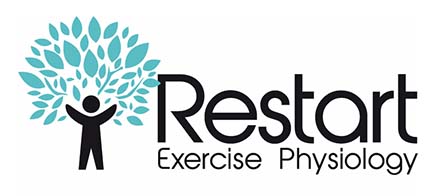Most of us are familiar with back pain – 4 out of 5 Australians will experience it in their lifetime. Whether it’s all too common lower back pain, fear of increased back pain when playing with your children or an ache in your upper back after a day at the office, back pain is frustrating and inhibiting for many people. For those who experience back pain, it can get in the way of daily activities.
There are many potential causes of back pain, and many ways to alleviate the symptoms. Exercise Physiologists can provide practical strategies to manage and eliminate back pain.
What is Back pain?
The back is a very complex part of our body. Our spine has the critical role of protecting our spinal cord, and in conjunction with a large number of supporting muscles, bears the weight of holding our body upright during all manner of daily tasks.
The spine has 24 bones which lay on top of each other – these are called vertebrae.
They are separated into 5 sections:
- Cervical
- Thoracic
- Lumbar
- Sacrum
- Coccyx
There are also discs which provide cushioning and sit between each vertebra, called intervertebral discs.
Each section of the spine performs a slightly different function, although all the vertebrae are there to protect our spinal cord. Groups of nerves branch off from each section of the spine, and two large ligaments connect bones together.
The back has 40 muscles which sit in 20 identical pairs on each side of the body. Different groups of muscles allow you to perform different movements. Some support ongoing processes such as breathing and maintaining postures. Other muscles support your limbs to move or help with big motions such as bending, lifting and twisting.
For such a complex structure, it’s easy to see how there is no one definition for back pain, and numerous potential causes. In fact, back pain is often caused by tightness, asymmetries and weakness elsewhere in the body.
Types and causes of back pain
As we mentioned above, there are numerous types of back pain and even more numerous causes. These causes can be mechanical, where something is physically wrong with the spine; muscular, where the muscles have been strained, or have become weak and deconditioned; or related to a chronic condition that causes pain in that area, such as Arthritis.
The pain can also have numerous qualities. The pain may radiate or be a shooting pain, it may be sharp or dull, acute or chronic. It may worsen with activity or improve with activity. These variations emphasise how important it is to not assume that all back pain will resolve on its own. It’s important to have any back pain assessed by a medical professional to avoid the injury re-occurring and potentially becoming chronic.
Here are some of the most common causes of back pain:
- Injuries. Lifting heavy things with improper technique, sports injuries, falls and more can all cause damage to our backs and lead to pain.
- Arthritis. Arthritis is an inflammation within joints – this can cause back pain when it settles into the joints of the spine. This is often termed osteoarthritis or rheumatoid arthritis.
- Sprains (stretched or torn ligaments) or strains (a torn tendon or muscle)
- Spasms, where muscles contract painfully
- Herniated or ruptured spinal discs – sometimes the discs providing cushioning between vertebrae can bulge or become damaged.
- Pregnancy – back pain can occur throughout the pre- and post-partum periods
- Sciatica – this occurs when the Sciatic nerve is compressed. It often causes sharp lower back pain that radiates into one or both of the legs.
- Scoliosis – scoliosis occurs when the back curves to the side, causing pain, asymmetries and discomfort.
In some cases, back pain can be caused by conditions unrelated to the structure of the back, such as kidney stones or endometriosis. This is another reason why it is important to investigate back pain and rule out any known causes.
As mentioned above, back pain can also arise as a symptom of a problem elsewhere in the body. We know there is a close relationship between hip mobility and lower back health – should the hips become stiff and rigid, for example through too much sitting, the lower back will compensate for this stiffness. This can lead to lumbar-focused pain and movement dysfunction.
How an Exercise Physiologist can help
It is important to see a healthcare provider if you are experiencing back pain. The spine is a complex structure, therefore back pain can have many potential causes. An Exercise Physiologist can help you to build healthy habits and develop a routine to build muscle, stretch and exercise in a way that helps to reduce back pain rather than contribute to it.
As Exercise Physiologists, we understand the intricacies of the back and spine, as well as the complex range of requirements for rehabilitation and pain management. We will carefully analyse your movement and discuss your diagnosis and symptoms in order to develop the best range of exercises. The primary aim of this is to decrease your symptoms while increasing mobility and strength.
“Following aggravation of an old lower back disc injury I was referred to Restart Exercise Physiology. I was experiencing severe pain and restriction which even prevented me from tying my own shoelaces. The team at Restart quickly and expertly had me back on my feet with renewed confidence. Moreover, they equipped me with a large range of exercises to help maintain their good work.
I strongly recommend you reach out to Restart for help if you’re suffering from any form of injury, restriction or discomfort.”
Jeremy, 44
We understand that back pain can be debilitating; we will treat you with empathy and consideration to help you overcome pain and get back on track towards your health and lifestyle goals.
